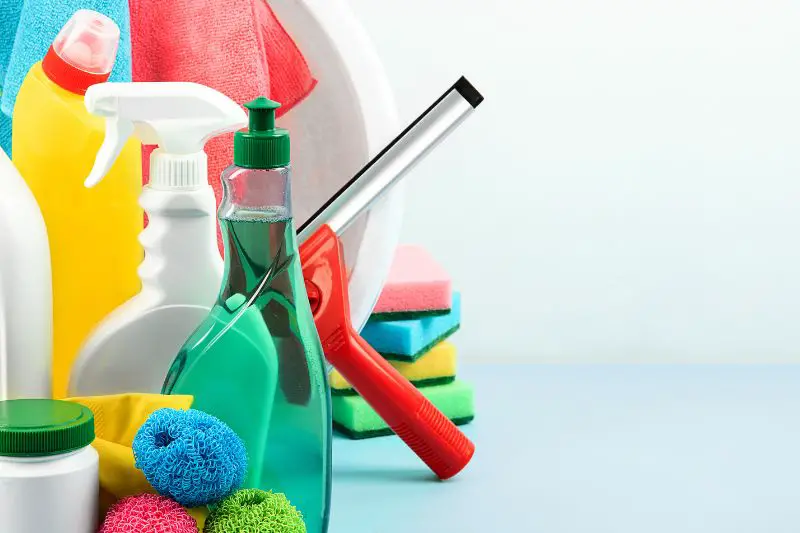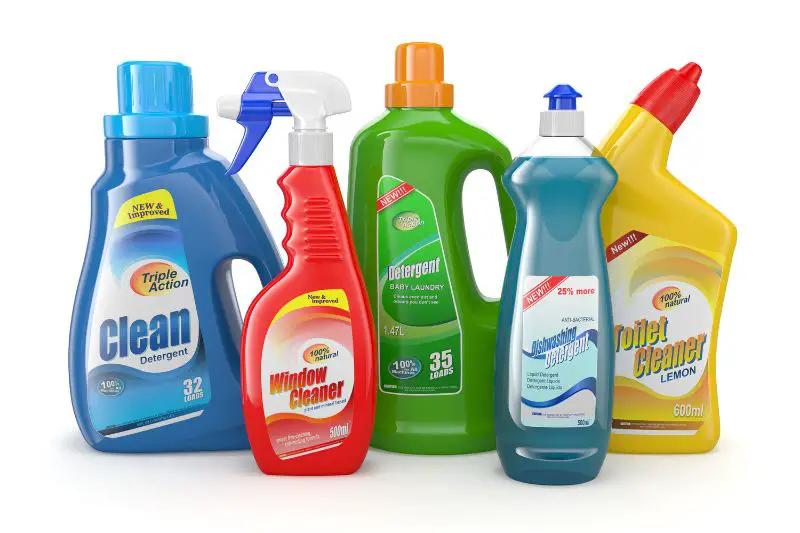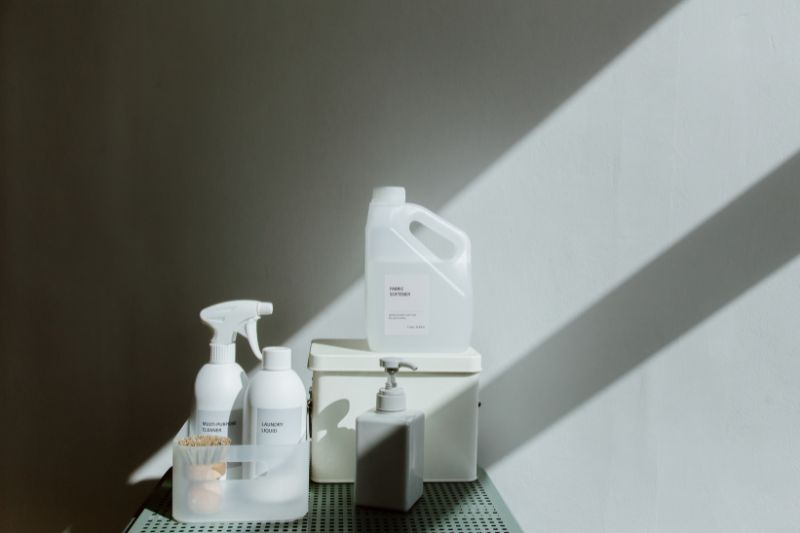
Have you ever wondered why some cleaning products fly off the shelves while others struggle to gain traction? The answer lies in understanding the target market. Whether you’re a business owner looking to boost sales or a marketer crafting the perfect campaign, knowing who buys cleaning products—and why—can make all the difference.
From eco-conscious consumers seeking sustainable solutions to businesses needing industrial-strength cleaners, the cleaning product industry serves a wide range of customers. But what drives their choices? What trends are shaping their preferences? In this guide, we’ll break down the key segments of the cleaning products market, explore consumer behaviors, and reveal effective marketing strategies to help you reach the right audience. Get ready to unlock the secrets of selling cleaning products successfully.
Defining the Target Market for Cleaning Products

To successfully market cleaning products, you need to understand who buys them, what influences their decisions, and how their needs vary. The target market isn’t just one homogeneous group—it consists of multiple segments, each with unique preferences and priorities.
What Is a Target Market?
A target market is a specific group of consumers most likely to purchase a product based on shared characteristics such as demographics, behaviors, and needs. For cleaning products, this can range from households seeking convenience to businesses requiring industrial-grade solutions.
Identifying the right target market allows businesses to tailor their branding, messaging, and distribution strategies effectively, leading to increased sales and customer loyalty.
Consumer Behavior in the Cleaning Products Industry
Consumer decisions in this market are shaped by a combination of necessity, habit, and emerging trends. Several factors influence purchasing choices:
- Effectiveness: Consumers expect cleaning products to deliver strong performance, whether for stain removal, disinfection, or general maintenance.
- Price Sensitivity: Budget-conscious shoppers prioritize cost-effectiveness, while premium buyers may seek specialized formulas.
- Eco-Friendliness: With rising environmental concerns, many customers prefer biodegradable, non-toxic, and refillable products.
- Convenience: Ready-to-use sprays, wipes, and subscription-based deliveries appeal to busy households and businesses.
- Health and Safety: People with allergies, pets, or young children often look for hypoallergenic and fragrance-free options.
The Importance of Understanding Your Market
Failing to identify the right audience can lead to wasted marketing efforts and missed opportunities. For example, advertising a high-end organic cleaner to budget-conscious consumers is unlikely to generate strong sales. On the other hand, positioning it within sustainability-focused communities can lead to higher engagement and conversions.
Key Segments of the Cleaning Products Market

The cleaning products market serves a wide range of consumers, each with distinct needs and preferences. Understanding these key segments helps businesses create targeted marketing strategies, develop relevant products, and position their brands effectively. By identifying and catering to the right audience, companies can improve sales, increase customer loyalty, and gain a competitive edge.
Residential Consumers
Residential consumers form the largest segment of the cleaning products market, including homeowners, renters, and families. Their purchasing decisions are influenced by convenience, price, safety, and environmental concerns.
Families with Children
Households with young children prioritize safety and hygiene. Parents are highly conscious of the chemicals in cleaning products and often seek non-toxic, child-safe formulas. Products labeled as “chemical-free,” “plant-based,” or “safe for kids and pets” are particularly appealing.
Key considerations for marketing to this segment:
- Highlight safety features, such as “no harsh chemicals” or “free from artificial fragrances.”
- Offer antibacterial and disinfecting solutions tailored to households with infants and toddlers.
- Use clear, family-friendly branding that conveys trust and reliability.
Busy Professionals
Time-strapped professionals look for convenience in their cleaning products. They prefer multi-purpose cleaners, pre-moistened wipes, and quick-drying solutions that streamline household chores. Subscription-based delivery services or bulk-buying options can also appeal to this demographic.
Key marketing strategies:
- Emphasize ease of use with “fast-acting,” “one-step cleaning,” or “no-rinse required” messaging.
- Promote products that save time, such as all-in-one sprays or automatic cleaning solutions.
- Utilize digital marketing, including social media ads and influencer partnerships, to reach this tech-savvy audience.
Eco-Conscious Households
The demand for sustainable and biodegradable cleaning products has surged, driven by consumers who prioritize environmental responsibility. These buyers are willing to pay more for products with eco-friendly packaging, natural ingredients, and certifications like “USDA Organic” or “EcoCert.”
Effective ways to target this segment:
- Use transparent labeling that highlights sustainability efforts, such as “biodegradable,” “refillable,” or “zero-waste.”
- Develop marketing campaigns focused on environmental impact reduction, such as reforestation initiatives or plastic-free packaging.
- Engage with eco-conscious influencers and communities to enhance brand credibility.
Commercial and Industrial Clients
Businesses require specialized cleaning solutions that meet high standards for hygiene and efficiency. This segment includes offices, healthcare facilities, schools, restaurants, and hospitality services. Unlike residential consumers, commercial clients prioritize bulk purchasing, regulatory compliance, and effectiveness.
Offices and Corporate Spaces
Maintaining a clean and sanitized workplace is essential for employee health and productivity. Offices require multi-surface disinfectants, air fresheners, and carpet cleaners that offer long-lasting freshness without strong chemical odors.
Key factors for marketing to corporate clients:
- Offer bulk discounts and subscription-based supply services.
- Emphasize products with antimicrobial and deodorizing properties.
- Promote low-maintenance cleaning solutions suitable for shared office spaces.
Healthcare Facilities
Hospitals, clinics, and nursing homes must adhere to strict sanitation guidelines. Medical-grade disinfectants, antimicrobial wipes, and hand sanitizers are in constant demand. Products marketed to this sector must meet regulatory approvals such as EPA, FDA, or CDC compliance.
Strategies for reaching healthcare clients:
- Showcase laboratory-tested results proving germ-killing efficacy.
- Provide case studies demonstrating effectiveness in infection control.
- Offer customized solutions tailored to specific healthcare environments.
Food Service Industry
Restaurants, catering businesses, and commercial kitchens require powerful grease removers, dishwashing liquids, and food-safe sanitizers to maintain hygiene standards. Cleaning products in this market must comply with food safety regulations.
Effective marketing approaches:
- Highlight certifications such as “NSF-approved” or “food-contact safe.”
- Offer concentrated formulas for cost-effectiveness in high-usage environments.
- Provide testimonials from industry professionals to build trust.
Specialty Consumers
Beyond standard household and commercial buyers, some niche markets have unique cleaning product needs. Catering to these specialty consumers can create strong brand loyalty and higher profit margins.
Allergy-Sensitive Individuals
Many consumers suffer from allergies or chemical sensitivities and seek hypoallergenic cleaning solutions. These buyers avoid products with artificial fragrances, dyes, or harsh irritants.
How to appeal to this segment:
- Clearly label products as “fragrance-free,” “hypoallergenic,” and “dermatologist-tested.”
- Use marketing messages that focus on health benefits, such as “safe for asthma sufferers.”
- Partner with healthcare professionals or allergy-awareness organizations for endorsements.
Pet Owners
Pet owners require cleaning products that remove pet odors, stains, and dander while being safe for their animals. Many are concerned about toxic ingredients like ammonia or bleach, which can be harmful to pets.
Marketing tactics for pet-friendly cleaning products:
- Use terms like “veterinarian-approved” and “pet-safe formula” to build trust.
- Highlight enzyme-based solutions that break down pet messes effectively.
- Create educational content on safe cleaning practices for pet owners.
Luxury and Premium Buyers
High-income consumers often seek high-end cleaning products with luxury branding, unique fragrances, or premium natural ingredients. These buyers are drawn to elegant packaging and exclusive formulations.
How to position premium cleaning products:
- Invest in sophisticated branding and upscale packaging designs.
- Offer limited-edition scents or collaborations with high-end brands.
- Focus on premium retail placements and upscale e-commerce platforms.
Understanding these market segments enables businesses to tailor their messaging, product development, and distribution channels for maximum impact. By targeting the right audience with the right approach, companies can position themselves effectively in the competitive cleaning products industry.
Demographics and Psychographics of Cleaning Product Buyers

Understanding the demographics and psychographics of cleaning product consumers is essential for effective marketing. While demographics define who the buyers are, psychographics explain why they buy. Businesses that analyze both can refine their branding, tailor their messaging, and position their products more effectively.
Age Groups and Their Purchasing Preferences
Different generations have unique cleaning habits and product preferences.
Millennials (Ages 25–40)
Millennials prioritize convenience, sustainability, and digital accessibility. They prefer:
- Eco-friendly cleaning products with transparent ingredient lists.
- Multi-purpose cleaners that simplify household chores.
- Subscription-based services or online purchasing options.
Marketing to millennials requires a strong digital presence, social media engagement, and authenticity in branding. Highlighting sustainability and ethical production can also resonate with this group.
Generation X (Ages 41–56)
Generation X values efficiency and reliability. They look for:
- Time-saving solutions, such as all-in-one cleaning kits.
- Trusted, well-established brands with a history of effectiveness.
- Competitive pricing and deals, especially for bulk purchases.
Reaching Gen X consumers involves a mix of online and traditional marketing, such as email promotions, loyalty programs, and in-store placements.
Baby Boomers (Ages 57+)
Baby boomers prioritize effectiveness and familiarity. They often prefer:
- Classic, well-known brands they have trusted for decades.
- Cleaning products designed for deep cleaning and disinfection.
- Simple, easy-to-read packaging with clear usage instructions.
Marketing efforts for this group should focus on trust, reliability, and accessibility. In-store promotions, television ads, and print media can be effective.
Income Levels and Buying Behavior
A consumer’s income level significantly influences their cleaning product choices.
Budget-Conscious Buyers
Shoppers on a tight budget focus on cost-effective solutions, favoring:
- Large, family-sized or bulk packaging for better value.
- Store-brand or generic cleaning products that offer affordability.
- Multi-purpose cleaners that eliminate the need for multiple purchases.
Retailers can target this segment through discount promotions, value bundles, and in-store coupons.
Mid-Range Consumers
Mid-range buyers balance affordability with quality. They look for:
- Recognizable brands that offer a good mix of performance and price.
- Products with added benefits, such as antibacterial properties or pleasant scents.
- Packaging that conveys trust and effectiveness.
This segment responds well to social proof, such as customer reviews and influencer endorsements.
Premium Shoppers
High-income consumers are willing to invest in luxury and specialty cleaning products, including:
- Organic, all-natural, and toxin-free cleaning solutions.
- Designer-branded or aesthetically packaged products.
- Exclusive formulations with high-end ingredients or fragrances.
Marketing to premium buyers requires an emphasis on quality, exclusivity, and branding that conveys sophistication.
Lifestyle and Values Impacting Purchasing Decisions
Consumer psychology plays a key role in determining cleaning product preferences.
Health-Conscious Consumers
Many buyers prioritize products that support their health and well-being. They seek:
- Hypoallergenic, fragrance-free, and non-toxic formulations.
- Anti-bacterial and disinfectant properties, especially post-pandemic.
- Certifications such as “dermatologist-tested” or “EPA-approved.”
Marketing to this group involves transparent labeling, educational content on safety, and expert endorsements.
Eco-Friendly Buyers
Environmental concerns shape the purchasing decisions of a growing segment of consumers. They prefer:
- Biodegradable, cruelty-free, and refillable cleaning products.
- Sustainable packaging made from recycled or compostable materials.
- Brands with corporate social responsibility initiatives, such as reducing plastic waste.
This segment engages with brands that align with their values. Certifications like “Green Seal” or “USDA Organic” add credibility.
Convenience-Driven Consumers
Busy lifestyles drive demand for time-saving cleaning solutions, such as:
- Pre-moistened disinfectant wipes for quick cleanups.
- Automatic and self-cleaning devices, such as robotic vacuums.
- Spray-and-walk-away cleaners that reduce scrubbing time.
Brands targeting this group should emphasize ease of use, efficiency, and modern solutions that fit into fast-paced routines.
Buying Motivations for Cleaning Products

Consumers purchase cleaning products for a variety of reasons, influenced by personal priorities, external factors, and market trends. Understanding these motivations allows businesses to position their products more effectively and craft messaging that resonates with different customer segments.
Health and Hygiene Concerns
Health and hygiene remain the primary motivators for cleaning product purchases, especially in households with children, elderly family members, or immunocompromised individuals.
Disease Prevention
Consumers increasingly seek products that eliminate bacteria, viruses, and allergens. The demand for disinfectants, antibacterial sprays, and sanitizing wipes surged following the COVID-19 pandemic, and hygiene-conscious buyers continue to prioritize products with proven germ-killing effectiveness.
Key marketing strategies:
- Highlight lab-tested claims, such as “kills 99.9% of germs.”
- Use endorsements from health professionals or organizations like the CDC or EPA.
- Offer bundle packs for surface cleaners, hand sanitizers, and disinfecting wipes.
Allergen and Sensitivity Considerations
Many consumers choose cleaning products specifically formulated to reduce allergens or avoid irritants. Hypoallergenic, fragrance-free, and dye-free formulations cater to individuals with respiratory conditions, sensitive skin, or allergies.
Ways to appeal to this segment:
- Clearly label products as “hypoallergenic,” “dermatologist-tested,” or “free from harsh chemicals.”
- Provide educational content on the health benefits of toxin-free cleaning.
- Promote real customer testimonials from allergy sufferers.
Convenience and Efficiency
Modern consumers value products that make cleaning faster, easier, and more efficient.
Time-Saving Solutions
Busy professionals, parents, and multitaskers prioritize convenience. They prefer pre-moistened wipes, spray-and-go solutions, and automated cleaning devices that reduce effort.
Effective marketing approaches:
- Highlight “no-scrub” or “quick-dry” formulas in product descriptions.
- Offer product demonstrations showing time-saving benefits.
- Leverage influencer partnerships to showcase real-life use cases.
Multi-Purpose and All-in-One Products
Consumers prefer cleaning solutions that serve multiple functions, reducing the number of products they need to buy and store. Multi-surface cleaners, 2-in-1 disinfectants, and stain removers with built-in deodorizers are popular choices.
How to position multi-purpose products:
- Use messaging like “one bottle, endless possibilities.”
- Showcase comparisons with traditional single-use cleaners.
- Offer refillable packaging to reinforce cost-effectiveness.
Environmental and Ethical Considerations
A growing segment of buyers prioritizes sustainability and ethical production when selecting cleaning products.
Eco-Friendly Ingredients and Packaging
Consumers concerned about environmental impact look for plant-based, biodegradable, and cruelty-free products. Sustainable packaging, such as refillable containers and reduced plastic use, is also a major selling point.
Strategies for attracting eco-conscious buyers:
- Highlight certifications like “Green Seal,” “USDA Organic,” or “EcoCert.”
- Use transparent, eco-friendly packaging with minimal waste.
- Share brand initiatives focused on sustainability, such as carbon footprint reduction.
Ethical Brand Values
Many consumers support brands that align with their values, such as fair labor practices, cruelty-free testing, or charitable contributions.
Building brand trust through ethical positioning:
- Display third-party certifications, such as “Leaping Bunny” for cruelty-free claims.
- Promote community initiatives, such as donations to environmental or social causes.
- Engage with sustainability-focused social media influencers.
Cost and Value Perception
While some consumers seek the lowest price, others prioritize long-term value.
Budget-Friendly Choices
Price-sensitive shoppers look for affordable cleaning products that offer good performance at a lower cost. They often buy in bulk, choose private-label brands, and seek discounts.
How to appeal to budget-conscious buyers:
- Offer multi-pack or economy-size options.
- Provide promotions, coupons, or loyalty rewards.
- Use messaging that emphasizes “best value for your money.”
Premium and High-Quality Formulations
Some consumers are willing to invest in high-end cleaning products with superior ingredients, luxurious scents, or designer branding. These buyers seek exclusivity and effectiveness.
Marketing premium products effectively:
- Highlight unique benefits, such as “handcrafted scents” or “dermatologist-approved luxury formulas.”
- Use elegant, high-end packaging to reinforce exclusivity.
- Partner with luxury lifestyle brands or influencers for endorsements.
Where Consumers Buy Cleaning Products

Understanding where consumers purchase cleaning products is essential for businesses looking to optimize their distribution strategies. Buying habits vary based on convenience, price sensitivity, and product preferences. Businesses that align their sales channels with consumer behaviors can maximize market reach and profitability.
Brick-and-Mortar Retail Stores
Despite the rise of e-commerce, physical stores remain a key purchasing channel for cleaning products. Many consumers prefer in-person shopping to assess product quality, compare brands, and take advantage of in-store promotions.
Supermarkets and Grocery Stores
Supermarkets are the most common place for household cleaning product purchases. Shoppers often buy cleaning supplies alongside their groceries, making these stores an essential distribution point.
Key advantages:
- High foot traffic and frequent visits ensure consistent sales.
- Promotional displays and in-store deals drive impulse purchases.
- Immediate product availability meets urgent cleaning needs.
How to succeed in supermarkets:
- Secure eye-level shelf space to increase visibility.
- Offer bundled promotions to encourage larger purchases.
- Utilize end-cap displays to highlight new or seasonal products.
Big-Box Retailers and Warehouse Clubs
Retail giants like Walmart, Target, and Costco attract shoppers looking for competitive pricing and bulk options. These stores cater to families and businesses that seek cost-effective cleaning solutions.
Consumer preferences in big-box stores:
- Value packs and multi-product bundles for cost savings.
- Well-known, trusted brands that ensure reliability.
- Private-label options for budget-conscious shoppers.
Winning strategies in big-box retail:
- Develop exclusive product sizes or packaging for warehouse clubs.
- Offer in-store demonstrations to showcase product effectiveness.
- Partner with retailers for co-branded promotions.
Drugstores and Convenience Stores
Pharmacies and convenience stores serve as quick-stop locations for consumers needing emergency cleaning supplies. These stores stock essential cleaning products but in smaller quantities and at slightly higher prices.
Why consumers shop here:
- Convenience of location and extended operating hours.
- Availability of travel-size and single-use cleaning products.
- Easy access to disinfectants, wipes, and sanitizers.
Best practices for selling in these stores:
- Focus on compact packaging for portability.
- Offer multi-functional products to maximize shelf space efficiency.
- Utilize point-of-sale displays for impulse buying.
Online Marketplaces and E-Commerce
E-commerce has revolutionized how consumers buy cleaning products, offering convenience, variety, and competitive pricing. Online shopping is especially popular among millennials and tech-savvy consumers.
Direct-to-Consumer (DTC) Brand Websites
Many cleaning brands operate their own e-commerce websites to sell directly to customers. This model allows companies to control branding, pricing, and customer experience.
Advantages of DTC sales:
- Higher profit margins by eliminating retailer markups.
- Personalized shopping experiences with subscription options.
- Direct engagement with customers through email and social media marketing.
How to succeed with DTC sales:
- Offer incentives like free shipping or first-time purchase discounts.
- Provide detailed product descriptions, reviews, and video demonstrations.
- Use targeted ads and retargeting campaigns to increase conversions.
Online Marketplaces (Amazon, Walmart.com, etc.)
Amazon dominates the online cleaning product market, offering fast shipping, subscription options, and competitive pricing. Walmart.com and other marketplaces also attract high traffic.
Why consumers prefer marketplaces:
- Wide selection of brands and product comparisons.
- Convenience of recurring subscriptions and bulk purchases.
- Fast delivery options, including same-day or next-day shipping.
Optimizing sales on online marketplaces:
- Use high-quality images and optimized product descriptions.
- Encourage customer reviews to boost credibility and visibility.
- Leverage sponsored ads to appear in top search results.
Subscription Services and Auto-Delivery
Subscription-based cleaning products are gaining popularity, particularly for eco-friendly and specialty brands. Consumers appreciate the convenience of regular deliveries without the hassle of reordering.
Popular subscription models:
- Eco-conscious brands offering refillable cleaning products.
- Monthly cleaning kits with a mix of essential supplies.
- Auto-delivery services for frequently used items like disinfectant wipes.
Strategies for subscription success:
- Provide flexible delivery options to accommodate customer preferences.
- Offer discounts for long-term subscriptions to encourage retention.
- Use engaging packaging and branding to enhance the unboxing experience.
Wholesale and B2B Distribution
Beyond household consumers, businesses, schools, and healthcare facilities require large quantities of cleaning supplies. Selling to B2B customers requires a different approach than retail.
Industrial and Commercial Suppliers
Businesses purchase cleaning products in bulk through specialized suppliers. Janitorial companies, hotels, and office buildings rely on high-efficiency cleaning solutions.
Key purchasing considerations:
- Large container sizes for cost-effectiveness.
- High-performance disinfectants that meet regulatory standards.
- Reliable delivery schedules for continuous supply.
Winning in the B2B space:
- Offer bulk discounts and wholesale pricing.
- Provide contract-based supply agreements for long-term partnerships.
- Ensure compliance with industry safety and sanitation regulations.
Hospitality and Healthcare Facilities
Hotels, restaurants, and hospitals have strict hygiene standards and require professional-grade cleaning solutions. These customers prioritize efficiency, safety, and compliance.
What matters to these buyers:
- Hospital-grade disinfectants and sanitizing solutions.
- Eco-friendly products that align with sustainability initiatives.
- Compliance with industry regulations (e.g., FDA, OSHA).
How to market to hospitality and healthcare clients:
- Provide case studies demonstrating product effectiveness.
- Offer training materials on proper product usage.
- Highlight certifications that meet industry standards.
By understanding where consumers purchase cleaning products and tailoring distribution strategies accordingly, businesses can maximize sales potential, increase brand reach, and cater to the diverse needs of their target market.
Conclusion
Understanding the target market for cleaning products requires a deep dive into consumer demographics, buying motivations, and preferred purchasing channels. Different segments—from budget-conscious households to eco-conscious buyers and commercial businesses—have distinct needs that influence their purchasing decisions.
Businesses that align their marketing, product development, and distribution strategies with these insights can maximize customer engagement and drive sales. Whether through retail partnerships, e-commerce, or direct B2B sales, success lies in offering the right products through the right channels while addressing key consumer concerns such as health, convenience, sustainability, and affordability.
